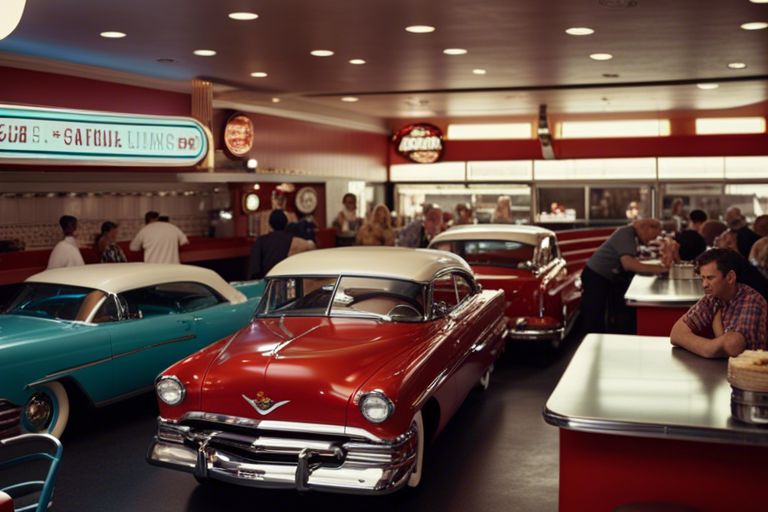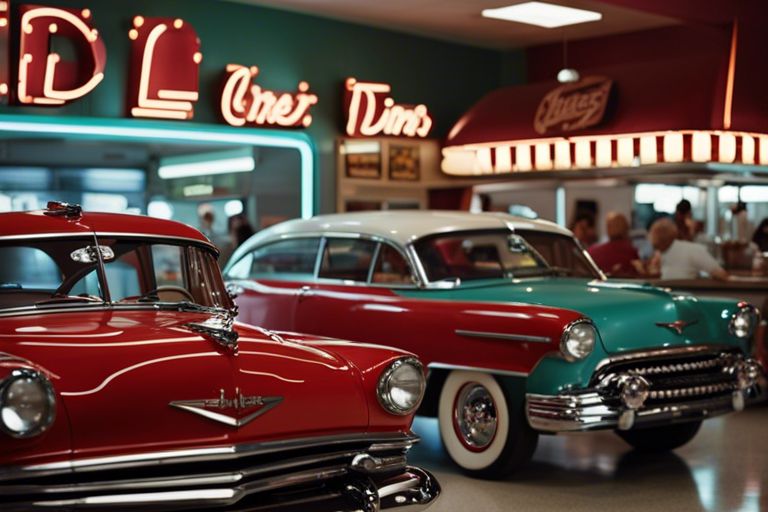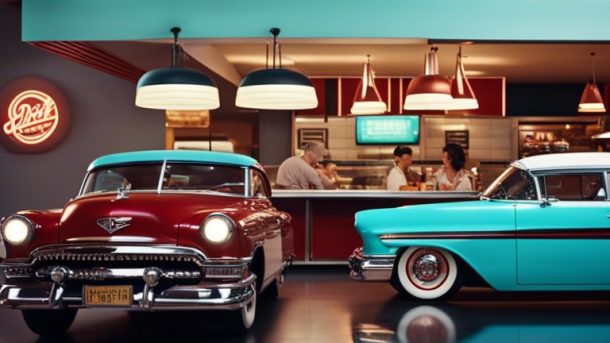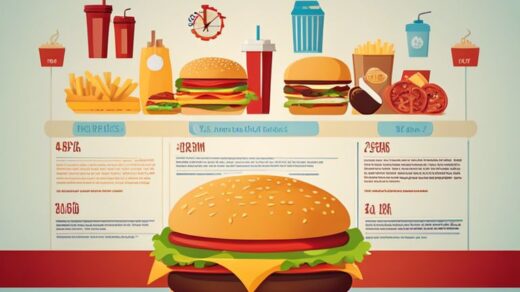Innovator in the food industry, fast food has a fascinating origin story that dates back to the early 20th century. Have you ever wondered who pioneered the concept of quick, convenient meals that revolutionized our eating habits? In this blog post, we will research into the history of fast food and uncover the trailblazers who laid the foundation for the bustling fast-food industry we know today.
Key Takeaways:
- White Castle is often credited as the first fast food chain, starting in 1921 in Wichita, Kansas.
- McDonald’s revolutionized the fast food industry with their Speedee Service System in the 1940s.
- Ray Kroc, a franchise agent for McDonald’s, played a significant role in expanding the fast-food chain to a global scale.
The Origins of Fast Food
While fast food might seem like a modern phenomenon, its roots actually go back thousands of years. Different civilizations around the world have embraced the concept of quick and convenient food options, paving the way for the fast food we know today.
Ancient Civilizations and Street Food
Street food has been a staple of societies for centuries, with ancient civilizations such as the Greeks, Romans, and Asians all having their own versions of quick bites. In these bustling cities, you could find food vendors offering everything from skewered meats to flatbreads filled with savory ingredients, catering to busy individuals on the go.
Medieval Europe and Market Stalls
Civilizations in medieval Europe also embraced the concept of fast food through market stalls that dotted town squares. These stalls offered a variety of hot and ready-to-eat foods, such as pies, pastries, and roasted meats. You could simply walk up, pay a small sum, and be on your way with a satisfying meal in hand.
With limited cooking facilities in most households and an increasingly urban population, market stalls became a popular choice for those looking for a quick and affordable meal option.
The Rise of Industrialization
Some key factors contributed to the rise of fast food during the era of industrialization. Mass production and standardization played a significant role in making fast food more accessible and efficient for consumers.
Mass Production and Standardization
One of the reasons fast food became popular during the industrialization period was the implementation of mass production techniques. This allowed food to be prepared quickly and in large quantities, making it easier for fast food restaurants to meet the high demand of customers. Standardization also played a crucial role as it ensured consistency in the taste and quality of the food across different locations.
The Birth of Convenience Foods
To meet the needs of an increasingly fast-paced society, convenience foods started to emerge during the industrialization period. These foods were designed to be easy and quick to prepare, catering to individuals who had limited time to cook elaborate meals at home.
The emergence of convenience foods revolutionized the way people approached meal times, providing them with more options that aligned with their busy schedules. This shift in consumer behavior further fueled the growth of the fast food industry, making it a staple in many people’s diets.

The Innovators
Walter Anderson and the First Fast Food Chain
First, let’s talk about Walter Anderson, the pioneer behind the first fast food chain. Anderson opened the first White Castle in Wichita, Kansas, in 1921. This innovative establishment introduced the concept of pre-cooked burgers that were ready to serve quickly to customers. White Castle revolutionized the restaurant industry with its standardized menu and efficient production methods, setting the stage for the fast food phenomenon that would follow.
The McDonald Brothers and the Speedee Service System
SystemFollowing in Anderson’s footsteps were the McDonald brothers, Richard and Maurice, who introduced the Speedee Service System at their San Bernardino, California, restaurant in 1948. This system emphasized the importance of a streamlined and efficient kitchen layout to minimize wait times for customers. The Speedee Service System was a game changer in the fast food industry, as it allowed the McDonald brothers to serve a high volume of customers with quality and consistency.
Innovators: The McDonald brothers’ Speedee Service System laid the groundwork for the modern fast food industry’s emphasis on efficiency and speed. This innovative approach not only transformed how food was prepared and served but also influenced the design of kitchens and restaurants for years to come. The McDonald brothers’ pioneering spirit and commitment to providing quick, affordable, and consistent food paved the way for the fast food giants we know today.
The Pioneers
Now let’s examine into the stories of the pioneers who laid the foundation for what we know today as the fast-food industry.
Ray Kroc and the McDonald’s Empire
An crucial figure in the fast-food world is Ray Kroc, the man behind the global success of McDonald’s. Kroc was a visionary who saw the potential in the fast-food concept developed by the McDonald brothers. In 1954, he joined forces with the brothers and went on to build a fast-food empire that revolutionized the industry. Through innovative business practices and a focus on quality and efficiency, Kroc turned McDonald’s into a household name known for its quick service and consistent offerings.
Colonel Harland Sanders and Kentucky Fried Chicken
McDonald’s wasn’t the only player in the fast-food game. Another pioneer was Colonel Harland Sanders, the founder of Kentucky Fried Chicken (KFC). Sanders, an entrepreneur and cook, started selling his fried chicken recipe from a roadside restaurant in Corbin, Kentucky. The unique blend of eleven herbs and spices quickly became a hit, leading Sanders to franchise his business across the country.
For instance, did you know that Colonel Sanders was in his sixties when he started KFC? His perseverance and dedication to perfecting his chicken recipe are a testament to the fact that it’s never too late to pursue your dreams. The success of KFC is a reminder that innovation and passion can lead to great achievements in the fast-food industry.

The Golden Age of Fast Food
Once again, fast food experienced a surge in popularity during what is known as the Golden Age of Fast Food. This era, which began in the 1950s, saw the rapid expansion of fast-food restaurants across America, forever changing the culinary landscape of the country.
The Post-War Boom and Suburbanization
Golden opportunities abounded in the post-war boom as the rise of suburbia and the increasing reliance on automobiles created the perfect environment for the fast-food industry to flourish. With more families living in the suburbs and enjoying the convenience of cars, fast-food restaurants quickly realized the potential of catering to these newly mobile customers.
The Rise of Drive-Ins and Take-Out
Suburbanization played a significant role in the rise of drive-ins and take-out services. This shift in consumer behavior allowed for the quick and efficient delivery of food to customers on the go. Drive-ins became popular social hubs where families could enjoy a meal without leaving the comfort of their vehicles, while take-out services provided a convenient option for those looking to enjoy their favorite fast foods at home.
Drive-ins and take-out services revolutionized the way people consumed food, making it easier and faster to grab a meal on the fly. The convenience and speed of service offered by these establishments further fueled the fast-food craze, solidifying its place in American culture.
Globalization and Expansion
Fast Food Goes International
Many fast food chains, after establishing themselves in their home countries, set their sights on international markets. The allure of bringing familiar tastes and convenience to people worldwide drove the globalization of fast food. American brands like McDonald’s, KFC, and Subway quickly expanded their operations into countries across the globe, adapting their menus and marketing strategies to suit local preferences.
Adaptation and Localization
International expansion brought a need for adaptation and localization of menus to cater to diverse palates and cultural norms.
Food
Global giants like McDonald’s tweaked their offerings to include items like the Maharaja Mac in India (a Big Mac with chicken instead of beef) or the McArabia in the Middle East (a pita sandwich with grilled chicken). These adaptations ensured that the fast food experience remained inviting and relevant to consumers worldwide.
Expansion
Many fast food chains have successfully expanded to every corner of the world, with drive-thrus and delivery options making it easier and more convenient for you to enjoy your favorite burgers, fries, and other fast food treats, no matter where you are.
Summing up
Hence, as you have learned throughout this article, fast food as we know it today can be traced back to various influences and innovations over the years. While there isn’t a single definitive answer to the question of who started fast food, it is evident that several key players and moments in history have contributed to the rise of this convenient and popular dining option. From the Automat to the McDonald brothers to the franchising model of Ray Kroc, each has played a significant role in shaping the fast food industry into what it is today.
FAQ
Q: Who is credited with starting fast food restaurants?
A: The concept of fast food as we know it today is often credited to the McDonald brothers, Richard and Maurice McDonald, who opened their first McDonald’s restaurant in 1940 in San Bernardino, California.
Q: Were there any fast food restaurants before McDonald’s?
A: Yes, there were actually earlier fast food establishments. White Castle, founded in 1921 in Wichita, Kansas, is considered to be the first fast food chain. A&W Restaurants, which started in 1919, is another early example of fast food in the United States.
Q: How did fast food become popular worldwide?
A: The expansion of fast food chains like McDonald’s, Burger King, and KFC in the mid-20th century contributed to the global popularity of fast food. These chains expanded internationally through franchising and aggressive marketing strategies, making fast food a ubiquitous part of modern-day culture around the world.



